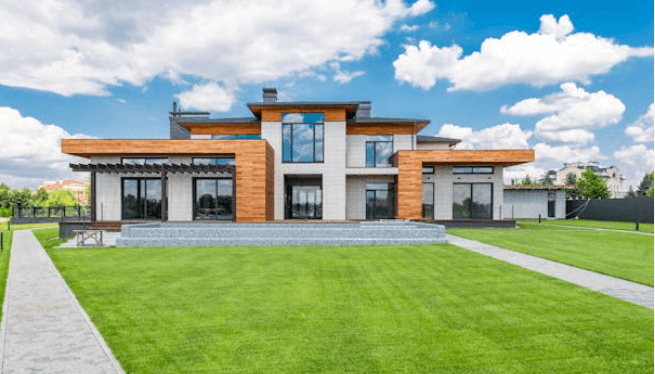Emerging Real Estate Trends Across the Nation

The real estate market is constantly evolving, driven by a complex mix of economic factors, shifting demographics, and new technologies. As we move further into 2024, several key trends are emerging across the nation that anyone interested in real estate should keep an eye on. Whether you’re a buyer, seller, or investor, understanding these trends can provide valuable insights to help you navigate the market more effectively. So, what’s on the horizon in the world of real estate?
The Continued Migration to Suburban and Rural Areas
One of the most significant trends in recent years has been the shift away from dense urban centers toward suburban and even rural areas. This movement, which began during the pandemic, shows no signs of slowing down. Many Americans are seeking more space, affordability, and a higher quality of life—factors that suburban and rural areas are better positioned to offer.
This migration is driven by several factors, including the rise of remote work, which has untethered many employees from the need to live near their offices. As a result, cities like Boise, Idaho, and Asheville, North Carolina, are seeing a surge in demand for housing, driving up prices and sparking new development.
For real estate investors, this trend presents an opportunity to capitalize on growing markets that were once overlooked. For buyers, it means more options, but also more competition in these newly popular areas. The key is to stay informed about which areas are on the rise and to act quickly when opportunities present themselves.
The Surge in Multi-Family Housing Development
As the demand for affordable housing continues to rise, multi-family housing developments are becoming increasingly popular. Developers across the nation are responding to the need for more housing by building apartment complexes, townhomes, and condominiums that can accommodate more people on less land.
This trend is particularly strong in cities where single-family homes are becoming out of reach for many first-time buyers. Multi-family developments offer a more affordable entry point into homeownership and are also attractive to investors looking for rental income.
For those considering purchasing a property, understanding the dynamics of multi-family housing can open up new possibilities. These properties often provide a higher return on investment and can be more resilient in economic downturns, as they cater to a broader range of potential tenants.
The Growing Importance of Green Building Practices
Sustainability is no longer a niche interest—it’s becoming a central consideration in real estate. Green building practices, which focus on energy efficiency, reduced environmental impact, and healthier living environments, are gaining traction across the country.
From solar panels to energy-efficient appliances and eco-friendly building materials, these practices are increasingly in demand among homebuyers who are conscious of their carbon footprint and looking to save on utility costs. Moreover, as more states and cities implement stricter environmental regulations, green building practices are likely to become the standard rather than the exception.
For sellers, upgrading your home with green features can make it more attractive to potential buyers and even increase its market value. For buyers, investing in a green home can lead to long-term savings and a smaller environmental impact. As this trend grows, expect to see more properties marketed for their eco-friendly attributes, particularly in progressive markets on the coasts and in environmentally-conscious cities like Portland and Boulder.
The Influence of Technology on Real Estate Transactions
Technology is reshaping the real estate industry in ways that were unimaginable just a decade ago. From virtual home tours to blockchain-based property transactions, technology is making the process of buying and selling homes faster, more efficient, and more transparent.
One of the most significant tech trends is the rise of online real estate platforms that offer everything from property listings to mortgage approvals, all in one place. These platforms are not only convenient but also provide a level of transparency that was previously hard to achieve. Buyers can compare prices, review neighborhood data, and even explore homes virtually before setting foot in them.
For sellers, technology offers new ways to market their properties and reach a broader audience. Using high-quality photos, virtual staging, and targeted online advertising can make a significant difference in how quickly a property sells and at what price. In competitive markets, understanding the best time to sell a house in Colorado, for instance, can be crucial, and tech tools can help pinpoint the optimal timing based on market data and trends.
The Resilience of the Luxury Market
While affordability remains a critical issue for many, the luxury real estate market has shown remarkable resilience. High-net-worth individuals continue to invest in luxury properties, particularly in markets that offer unique lifestyle amenities, such as coastal views, mountain retreats, or proximity to cultural hubs.
Cities like Miami, Aspen, and Beverly Hills are seeing strong demand for luxury homes, driven by both domestic buyers and international investors. These properties often feature state-of-the-art amenities, cutting-edge technology, and high levels of privacy and security, making them desirable even in uncertain economic times.
For investors and sellers in the luxury market, the key is to stay attuned to what buyers are looking for, whether it’s eco-friendly features, smart home technology, or unique architectural designs. The luxury market may be smaller than the mainstream market, but it’s often more insulated from economic fluctuations, making it an attractive option for those looking for stability.
Conclusion: Navigating the New Real Estate Landscape
The real estate market in 2024 is marked by significant shifts in where and how people want to live. From the ongoing migration to suburban and rural areas to the increasing demand for multi-family housing and green building practices, these trends are reshaping the market in profound ways. For anyone involved in real estate, staying informed about these emerging trends is crucial to making smart decisions and staying ahead of the curve.
Whether you’re buying, selling, or investing, understanding the forces driving the market will help you navigate the new landscape with confidence and success.





